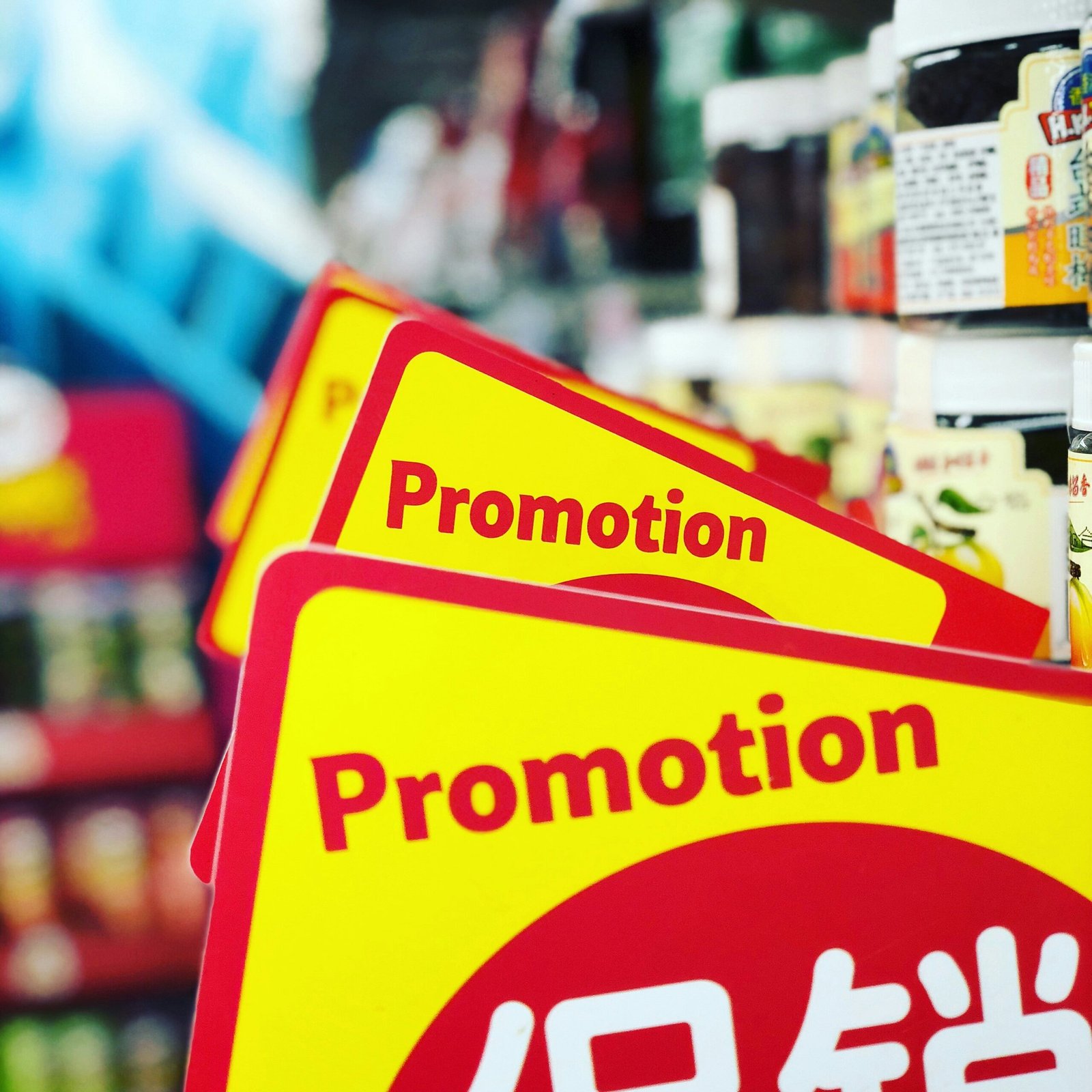7 Benefits of Having an E-Newsletter for Your B2B E-Commerce Brand
Introduction to E-Newsletters
E-newsletters, also known as electronic newsletters, are digital publications sent via email to a targeted audience, primarily to inform, educate, and engage subscribers. Within the B2B e-commerce landscape, e-newsletters have emerged as a vital strategic communication tool, enabling brands to maintain ongoing relationships with their audience. They provide a unique platform to share updates, promotions, industry news, and valuable insights tailored specifically for business customers.
Furthermore, e-newsletters allow for measurable outcomes, enabling brands to track engagement metrics such as open rates, click-through rates, and conversion rates. This capability empowers companies to refine their messaging, boost the effectiveness of their marketing efforts, and ultimately align their strategies with audience preferences. In the B2B sector, where decision-making processes can be lengthy and complex, consistent communication through e-newsletters can significantly impact brand recall and influence purchasing decisions.
Overall, e-newsletters serve as a crucial conduit for B2B e-commerce brands to share informative content, promote new offerings, and engage with their audience in meaningful ways. By implementing a well-structured e-newsletter strategy, businesses can bolster their market presence, enhance customer loyalty, and ultimately achieve sustained growth in a competitive digital marketplace.
Build Stronger Customer Relationships
Establishing strong customer relationships is essential for any B2B e-commerce brand looking to thrive in a competitive marketplace. E-newsletters serve as a powerful tool for nurturing these connections by regularly engaging customers with relevant and personalized content. Unlike traditional marketing tactics that can feel impersonal, e-newsletters allow brands to directly address the individual needs, preferences, and pain points of their audience.
One effective strategy for leveraging e-newsletters to enhance customer relationships is through segmentation. By categorizing customers based on various criteria such as industry, purchasing behavior, or engagement level, brands can create tailored content that resonates with each segment. For instance, a B2B e-commerce brand may develop specific newsletters for software buyers versus product manufacturers, ensuring that the information presented is pertinent to each group’s unique challenges and interests. This approach not only boosts engagement but also fosters a sense of connection between the brand and its customers.
Moreover, incorporating personalized elements such as addressing recipients by their names, recommending products based on past purchases, or including content from user surveys can significantly enhance customer satisfaction. When customers feel that the brand understands their individual needs, loyalty is likely to increase. Additionally, encouraging feedback within e-newsletters can further strengthen relationships as clients feel valued and heard. This two-way communication fosters trust and loyalty, making customers feel more invested in the brand.
In essence, e-newsletters enable B2B brands to foster stronger connections with their customers through personalized, relevant content that addresses specific needs. By leveraging segmentation, personalization, and feedback, brands can improve customer satisfaction and build long-lasting loyalty. Read more...
Enhancing Brand Awareness through E-Newsletters
In the competitive landscape of B2B e-commerce, enhancing brand awareness is crucial for differentiation and customer acquisition. E-newsletters serve as a vital tool in achieving this goal by fostering consistent messaging and delivering high-quality content directly to subscribers. When businesses regularly engage their audience through thoughtfully crafted newsletters, they position themselves as leaders in their industry, thereby increasing brand visibility.
The key to successfully enhancing brand awareness lies in the frequency and quality of the content shared. E-newsletters that are rich in valuable insights, industry trends, and updates about the brand keep subscribers informed and engaged. This not only cultivates a loyal following but also reinforces the brand’s expertise and credibility within its niche. By maintaining a continuous dialogue with their audience, companies can ensure that they remain top-of-mind when potential clients consider e-commerce solutions.
Moreover, e-newsletters create opportunities for personalization, which can significantly boost recognition. Businesses that segment their subscriber lists and tailor content to different audience segments are likely to see higher engagement rates. When subscribers receive information that resonates with their interests and needs, it fosters a deeper connection, further solidifying brand loyalty. Over time, this dedicated effort contributes to a natural association between the brand and its target audience, elevating overall brand recognition.
In addition to direct engagement, e-newsletters can encourage social sharing. When content is valuable and informative, subscribers are more likely to share it within their own professional networks, extending the reach of the brand’s messaging. This organic sharing not only amplifies visibility but also introduces the brand to new potential customers, enhancing the overall effectiveness of the e-newsletter strategy. Therefore, leveraging e-newsletters is an essential facet of any B2B e-commerce brand’s strategy to enhance recognition and sustain competitive advantage. Read more…
Drive Website Traffic
E-newsletters are a powerful mechanism for driving traffic to a B2B e-commerce brand’s website. By strategically incorporating calls-to-action (CTAs), businesses can not only engage their audience but also encourage them to explore their website further. A well-structured e-newsletter can serve as a gateway, directing readers to specific landing pages, product listings, or informative blog posts that align with their interests and needs.
To maximize effectiveness, the content included within the e-newsletter should be both relevant and compelling. Each issue should contain enticing snippets or summaries of articles, product showcases, or new service offerings, which can pique the interest of readers. Incorporating attention-grabbing headlines and visually appealing graphics can further enhance the likelihood of a user clicking through to the website. Additionally, embedding links that lead to specific sections of the website, such as promotional pages or detailed product descriptions, can facilitate easier navigation for potential customers.
Furthermore, segmentation of the subscriber list allows for tailored content that resonates more closely with individual interests and behaviors. By analyzing past interactions and purchase histories, brands can create personalized e-newsletters that feature targeted CTAs. For example, businesses might share exclusive offers or insights relevant to particular industries, prompting recipients to visit the website for specialized resources or discounts.
In integrating these techniques into an e-newsletter, brands not only enhance user engagement but also significantly increase visitor traffic to their website. This approach not only cultivates a deeper connection with the audience but also positions the e-commerce site as a valuable resource in the broader marketplace. Ultimately, effective e-newsletters serve as a dynamic tool for bridging the gap between brand communication and website interaction. Read more…
Generate Leads and Sales
E-newsletters have emerged as a powerful tool for B2B e-commerce brands seeking to generate leads and subsequently boost sales figures. By serving as a direct communication channel, e-newsletters facilitate the distribution of tailored content and promotional materials that can engage prospective customers effectively. One prominent strategy for lead generation through e-newsletters involves the use of lead magnets. These valuable resources, such as e-books, whitepapers, or exclusive webinars, are offered to subscribers in exchange for their contact information. This approach not only enriches the e-newsletter’s value but also gradually converts interested readers into leads.
Moreover, e-newsletters offer the unique opportunity to feature promotions and exclusive offers that add an extra incentive for subscribers to turn their interest into action. For instance, time-sensitive discounts or special deals can create a sense of urgency, prompting subscribers to make a purchase decision quickly. Such strategies not only drive immediate sales but also foster a sense of loyalty among customers who appreciate the perks of being subscribed.
Furthermore, consistent communication through e-newsletters helps to keep your brand top-of-mind for your audience. Regular updates and engaging content nurture relationships with potential leads, making them more likely to become paying customers. By segmenting your email list, you can ensure that subscribers receive information tailored to their specific interests, which further enhances the likelihood of converting leads into sales.
Ultimately, implementing an effective e-newsletter strategy can significantly impact lead generation and sales outcomes for B2B e-commerce brands. With careful consideration of content and promotional techniques, e-newsletters can be transformed into a vital asset for attracting and retaining customers. Read more…
Showcase Industry Expertise
In the realm of B2B e-commerce, establishing authority and showcasing industry expertise is crucial for fostering trust and credibility among potential clients. An e-newsletter serves as an effective platform for businesses to achieve this goal by disseminating valuable insights, sharing industry trends, and providing thought leadership content. By regularly delivering high-quality content through their e-newsletters, companies position themselves as trusted resources within their respective industries.
The importance of sharing valuable insights cannot be understated. When businesses curate and share articles, whitepapers, and reports that highlight industry developments, they contribute to the knowledge pool of their audience. This not only demonstrates their awareness of industry dynamics but also encourages recipients to engage with the brand as a knowledgeable resource. Additionally, by presenting analyses and commentary on significant trends or changes within the market, businesses can further distinguish themselves as experts who are ahead of the curve.
Furthermore, thought leadership content within e-newsletters allows businesses to express their unique perspectives on industry challenges and innovations. By discussing their experiences, insights, and potential solutions, they not only engage their audience but also advocate for their brand as a leader in the field. This type of content encourages readers to view the brand not just as a service provider but as an ally in navigating industry complexities.
Incorporating case studies and client success stories into e-newsletters can also bolster a brand’s depiction of expertise. These real-life examples not only highlight the applicability of the brand’s solutions but also provide social proof that reinforces trust. The nuanced storytelling that showcases the practical impact of a company’s offerings can be immensely powerful in fostering a deeper connection with the audience. Read more…
Gather Insights and Feedback
Utilizing e-newsletters effectively can help B2B e-commerce brands gather valuable insights and feedback from their subscribers. An e-newsletter serves as a direct line of communication between the brand and its audience, enabling businesses to not only disseminate information but also to engage in meaningful interaction. Incorporating tools such as surveys and polls in the e-newsletter allows organizations to actively solicit opinions and preferences from their customers, fostering a two-way dialogue.
Surveys are particularly effective in obtaining detailed feedback on various aspects of a brand’s offerings. By asking targeted questions related to product features, pricing strategies, or customer service experiences, businesses can collect actionable data. This data can subsequently guide product development and enhance customer satisfaction. Moreover, polls provide a quick and efficient way for subscribers to share their thoughts on trending topics or new concepts, enabling brands to gauge interest levels and pivot accordingly.
Additionally, utilizing analytics tools to track subscriber engagement metrics is imperative. Understanding which content resonates most with the audience can reveal valuable patterns regarding customer interests and behavior. For instance, brands can identify which topics receive the highest open and click-through rates, allowing them to refine future content strategies. By aligning the e-newsletter content with subscriber preferences, organizations can improve their relevance in the market.
Incorporating interactive elements within e-newsletters not only heightens engagement but also demonstrates to subscribers that their opinions are valued. Emphasizing their contributions to decision-making processes strengthens customer relationships and loyalty. Ultimately, gathering insights and feedback through well-designed e-newsletters equips B2B e-commerce brands with the information needed to adapt and thrive in a competitive landscape. Read more…
Cost-Effective Marketing Strategy
In the realm of B2B e-commerce, cost efficiency is paramount for sustained growth and competitive advantage. E-newsletters stand out as a remarkably economical marketing tool compared to traditional marketing methods. When examining various marketing channels, email marketing has demonstrated a significant return on investment (ROI), consistently outpacing other mediums. According to recent studies, businesses can expect an average ROI of $42 for every dollar spent on email marketing, positioning e-newsletters as one of the most financially viable tactics available.
By leveraging e-newsletters, B2B brands can effectively engage their audience at a fraction of the cost associated with print advertising, television commercials, or direct mail campaigns. Traditional marketing often requires substantial upfront investments in materials, distribution, and production, leading to a higher barrier to entry. In stark contrast, the low cost of deploying e-newsletters, which merely includes design and sending expenses, ensures that even smaller businesses can maintain a constant marketing presence without stretching their budgets.
Furthermore, the digital nature of e-newsletters allows for real-time analysis and optimizations. By utilizing data analytics and tracking tools, businesses can assess the performance of their campaigns almost instantaneously. This level of insight enables more informed decisions and the ability to adjust strategies on the fly, ultimately driving better results and preserving financial resources. With automatic archiving, segmentation options, and the capacity for dynamic content personalization, e-newsletters also contribute to heightened engagement efficiency, thereby enhancing the overall value proposition.
In summary, e-newsletters serve as a cost-effective marketing strategy for B2B e-commerce brands, boasting high ROI and low operational costs. This sustainable approach allows businesses to communicate regularly with their audience while minimizing financial risk, making it an indispensable element of contemporary marketing portfolios.
Conclusion: Embracing E-Newsletters for Future Growth
In today’s fast-paced digital environment, e-newsletters emerge as a vital component for B2B e-commerce brands aiming to establish and maintain market presence. Throughout this discussion, we have highlighted several key benefits that underscore the importance of integrating e-newsletters into a broader marketing strategy. Firstly, e-newsletters foster direct communication channels with customers, allowing businesses to create personalized content that resonates with their audience. This builds trust and loyalty over time, essential elements for sustaining competitive advantage.
Furthermore, e-newsletters serve as an effective platform for sharing valuable insights, industry news, and product updates that keep clients informed and engaged. By doing so, brands not only position themselves as industry thought leaders but also enhance brand visibility. The ability of e-newsletters to drive traffic to websites and convert leads into sales cannot be overstated. Regularly disseminated information through e-newsletters ensures consistent brand exposure, reinforcing the brand’s relevance in an ever-evolving market.
Additionally, the cost-effectiveness of e-newsletter campaigns compared to traditional advertising methods makes them an attractive option for B2B organizations, especially small to medium-sized enterprises. This affordability does not compromise reach and engagement; rather, it opens doors for targeted marketing efforts that can yield significant returns on investment.
Given the multifaceted advantages of e-newsletters—from building relationships and enhancing brand awareness to driving sales—it is imperative for B2B e-commerce brands to embrace this tool proactively. Integrating e-newsletters into their marketing strategies will not only keep brands competitive but also align them with the demands of contemporary business ecosystems. Adopting e-newsletters can indeed pave the way for future growth and success in the dynamic landscape of B2B e-commerce.







